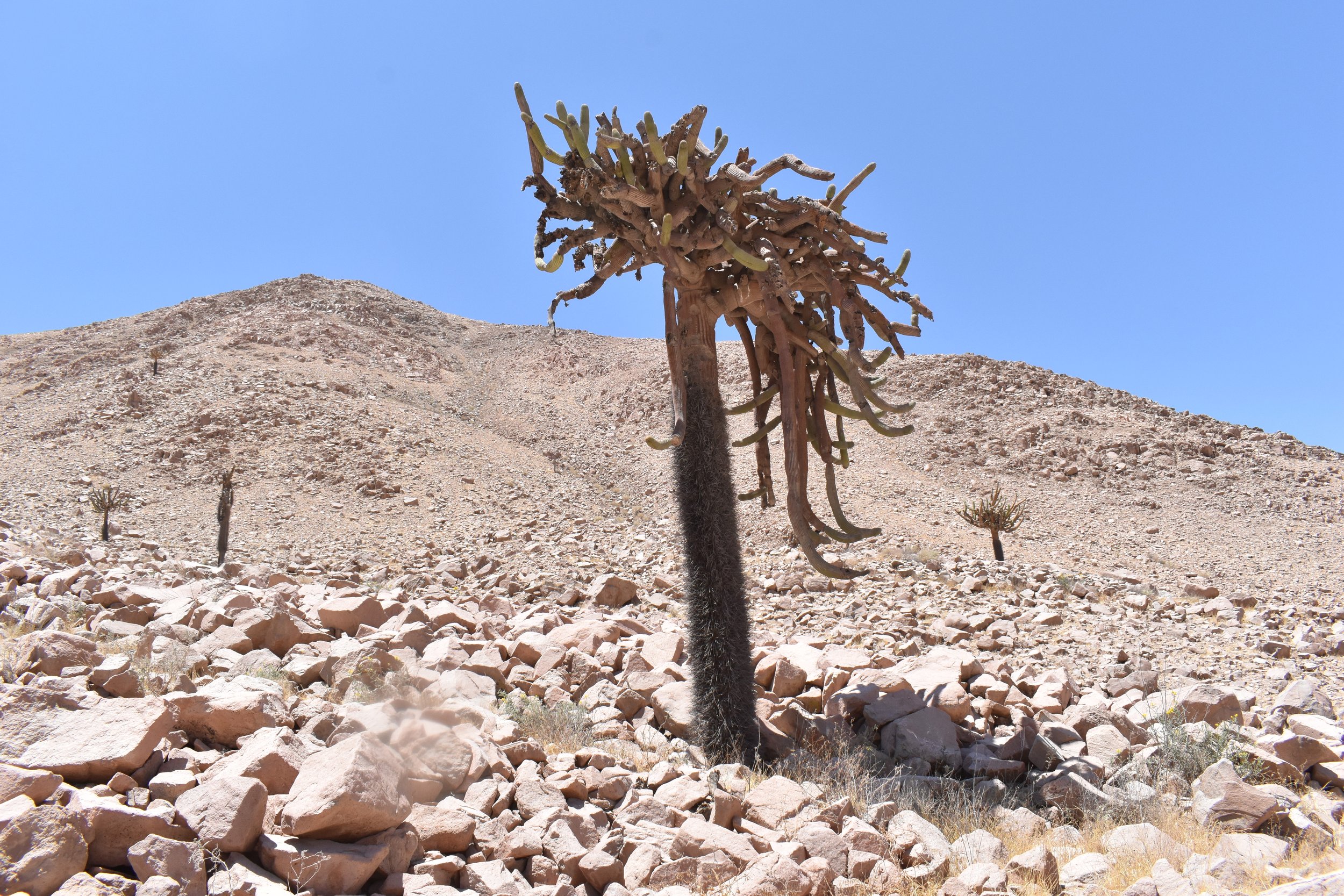FLORA OF CHILE
Another trip that was funded by our UK benefactor in 2019 was a trip to Northern Chile, from Arica by the Peruvian border, South to the Andes just East of Santiago. From incredible radiations like the endemic genus Copiapoa to cool endoparasites like Tristerix aphylla, Chile is a hotspot of endemism and incredible diversity. Other plants and groups of note include some of the Mutisioid (Subfamily Mutisioideae) asters (Family Asteraceae), the incredible 2,000 year old high-Andean “carrots” (Family Apiaceae) of the genus Azorella, the nightshade genus Nolana, columnar cacti such as Browningia and Eulychnia and Trichocereus, and many more.
Slightly uphill from Arica, Tillandsia was the only plant growing on these barren hills of the Northern Atacama Desert.
Tillandsia marconae. Also growing here was Tillandsia landbeckii.
Tillandsia landbeckii
"Waves" of Tillandsia growing on the otherwise barren mountain here, catching the fog.
A turkey vulture trying to catch some infrared radiation in the morning. It later vomitted. Right on.
A species of Cistanthe, a very ecologically successful Caryophylid genus of the family Montiaceae which has a diverse radiation in Chilean Deserts.
Cistanthe sp.
a dry wash at 6,000' elevation (maybe higher, I forget)
Solanum pennellii. The clade of Solanum that occurs in Chile and Peru is the closest relative of modern domesticated tomatoes.
Solanum pennellii
Nolana rhombifolia (Solanaceae)
Trixis cacalioides (Asteraceae)
Trixis cacalioides (Asteraceae)
Browningia candelaris (Cactaceae)
Browningia candelaris (Cactaceae)
Browningia candelaris (Cactaceae)
Browningia candelaris (Cactaceae)
Browningia candelaris (Cactaceae)
Adesmia atacamensis. Adesmia is a huge genus in Chile that has been very successful in the ATacama, most likely because of how glandular and sticky it is, which seems to help prevent moisture loss, among other benefits. These "tar peas" quickly became one of my favorite genera there, worthy of a deeper look. There are some interesting papers on them available on google scholar which can later be stolen on sci-hub.
Adesmia atacamensis. Adesmia is a huge genus in Chile that has been very successful in the ATacama, most likely because of how glandular and sticky it is, which seems to help prevent moisture loss, among other benefits. These "tar peas" quickly became one of my favorite genera there, worthy of a deeper look. There are some interesting papers on them available on google scholar which can later be stolen on sci-hub.
Chuquiraga kuschellii. This genus is a member of the ASteraceae subfamily Barnadesioideae, which is notable for being the only one of the 12 subfamilies (or was it 13?) in Asteraceae that lacks the 23k base pair inversion that the rest of the family has. Vicki Funk and Jose Panero identified this and realized how unique this subfamily was, and that it was quite likely "basal" in the family. That is, it was a "living fossil" of the sunflower family. That clickbait phrase is problematic though, so I suggest only using it to introduce the concepts of "early branching" evolutionary lineages and not getting too comfortable with it.
Chuquiraga kuschellii. This genus is a member of the ASteraceae subfamily Barnadesioideae, which is notable for being the only one of the 12 subfamilies (or was it 13?) in Asteraceae that lacks the 23k base pair inversion that the rest of the family has. Vicki Funk and Jose Panero identified this and realized how unique this subfamily was, and that it was quite likely "basal" in the family. That is, it was a "living fossil" of the sunflower family. That clickbait phrase is problematic though, so I suggest only using it to introduce the concepts of "early branching" evolutionary lineages and not getting too comfortable with it.























